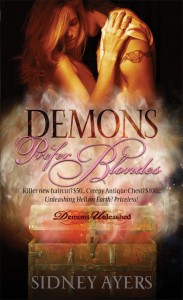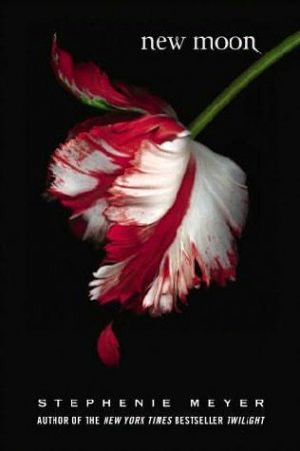We’ve been discussing backstory these last few weeks, and we’ll be wrapping it up today. I hope that I’ve shown you how important backstory is and how carefully you need to handle it.
We’ll finish today with an exercise that I did with two other writers. You may remember Francesca from the writing sample she so kindly offered up for public review a couple of months ago. She and Tony and I came up with a character and discussed ways that different backstories would change the direction of the plot.
Because of time constraints, the conversation has been edited for length.
—
Me: Okay, so here’s the plan. I’m going to give you some basic information about a character. Then we’re going to brainstorm possible backstory elements of his or her life.
The goal is to determine how those elements of backstory would affect the direction of the plot, or affect each other.
Our character’s name is Kendall. Male or female?
Francesca: Male.
Tony: I’d say male as well
Based solely on gut
Me: Sounds good. So Kendall is male. 20-something years old. Romantically unattached.
Did he go to college?
Tony: Yeah, it’s likely
Francesca: Probably for a few years, at least.
He studied art.
Me: Did he graduate?
Tony: Okay, yeah, he graduated, or is in the process of graduating
Francesca: He went to college because that’s what all young adults do; you graduate high school and then you go to college. Then you get a job. It was what was expected of him… Maybe he didn’t enjoy it as much as he thought?
Tony: If he’s a protagonist and it’s a tragedy, then he’s graduated already
Me: Why would that make it a tragedy?
Tony: Because, typically, in a tragedy, the protagonist has it all. It’s a fall. An education can easily represent stability and success
Me: Unless it’s an art degree
Francesca: Which is why he dropped out!
Tony: lol
Or worse
Philosophy
Me: One of my favorite characters I ever wrote was a philosophy major who couldn’t do anything after college, so he became a PI
Okay, so, he was an art student, and he graduated. What kind of plot do we expect here?
Francesca: Okay. Kendall has an older sister named…Laura…who already went through the whole college biz. She was a business major, graduated with honors, married her college beau, is expecting a kid.
Me: Ahh, so he has a lot to live up to
Francesca: Yes.
Tony: I’d be tempted to place him in a fantasy type setting, too
Something where there’s an element of science fiction, or magic, or something supernatural
I’d want to make take an ordinary guy and see what happens to him if he’s placed in an extraordinary situation
Me: Fun twist.
Francesca: Kendall and Laura have a decent relationship; he’s seven years her junior. He feels like his parents have always compared him to her (whether or not they actually DID isn’t relevant, but he FEELS as though they did)
He also feels like Laura was the favorite.
Tony: I like everything Francesca’s saying about Laura, too
But maybe this doesn’t strain his relationship with her
But with his parents
Francesca: Right, exactly.
Tony: Right. I wouldn’t see a great deal of conflict with Laura
UNLESS we made that a plot device
Francesca: Their parents are likely divorced, since it’s a modern setting.
Tony: Another circumstance to overcome
Francesca: Maybe there’s a step-mom
Tony: That’d go with the fantasy element
lol
We just wrote Cinderella for a guy
Francesca: …Kenderella?
Me: Wrinkle on wrinkle. Okay, so we’ve got wicked stepmothers and perfect sisters. So what’s his story question? What’s the difficulty he has to overcome, and what does a happy ending look like for him?
***For those of you watching at home, Tony and Francesca have agreed to each write out the answer to the previous question at the same time, and then send the answers simultaneously to look at how their answers differ.
Francesca: Kendall is 22, has dropped out of school, and is now faced with having to get a job he doesn’t necessarily want to repay student loans. He is happy for / proud of his sister, and his relationship with his parents is rocky. They are disappointed that he has dropped out, and his mother insists that art was probably not the best idea in the first place. His dad is on his side.
Kendall gets a job at the city library. One day, an old cartography book is given to the library and it’s Kendall’s job to sort it and place it or whatever. As he looks through the book, he realizes that the maps are incredibly old and, also, incredibly fictitious. But its quality surpasses that of just any “fantasy book” with a map thrown in for detail. Also, at the back of the book, he finds a key taped (glued? strung?) to the inside cover. There is a smaller map attached to this, a map of his town, leading to the door to which the key belongs. Kendall’s question is whether or not to find the door. The difficulty to overcome: continue in his mediocre life, or set off on an adventure? A happy ending looks like Kendall becoming more sure of himself and feeling as though he has purpose.
Tony: Okay. His story… Well, I’m going to place him in an extraordinary situation. Maybe he’s a witness to something, or he sees something that he’s not supposed to. Maybe he develops an ability. An art major drop-out who is wanting to live up to the pressures and expectations of life and his family. So a happy ending for him would look like achieving that balance, and a level of self-discovery that the expectations are actually his own chains. His happy ending is freedom, whether he achieves his goal or not. Maybe he has to save the world, or maybe even save his family. I think that would be cool, that there is an outside force that is putting pressure on his family and causing conflict either from within or without or both. Laura would be oblivious to it, or, if she was aware, would be helpless to do anything. He’d be called to step up, to make his stand, and, in so doing, save the world, save his family, but really he’s trying to save himself. A wicked stepmother would be a good catalyst for this conflict, I think, but it’d be a cool device that he actually ends up being crucial and key to helping Kendall achieve his goals.
Francesca: The door could be a parallel to Pandora’s box.
Tony: What do you mean?
Francesca: Say that we go with the rough plot I mapped out just now, and combine it with your idea. Let’s say he finds this key, and in his insolence and frustration decides that he wants to follow the map. Turns out that the door is a door that is holding back some type of darkness, evil, or other force which then causes trouble in the world. Kendall CAUSED the problem, and now he is faced with how he must fix it?
Me: Kendall has to shut the door and save the town from evils galore. That process includes reaching a place of freedom and confidence concerning his place in his family and in society.
How would it change the plot if we revealed in the first chapter of the book that Kendall was an eagle scout.
Tony: He would have skills and abilities that would make him unique. Maybe he’s really good at X badge/ability and that would play an important role in one of the trials he must overome
He has to be uniquely suited, even though he seems ordinary, for the task at hand
Also, he hated Boyscouts and didn’t want to do it
But it was just more pressure from his folks and his desire to perform
He’d at least be able to read the map
lol
Francesca: It would be able to show off the resentment between him and his parents. Being in Eagle Scouts was an outlet for his parents to show their pride and love; “We love our son, we put him in Boy Scouts, he is very accomplished. We’re so proud.” But as an adult, your parents have to naturally back off. So being an eagle scout, for Kendall, is just a sign to HIM of his parents’ love that is no longer there, or at least not there in the same LEVEL, which he takes personally.
Does that make sense?
Tony: Yeah, I think.
Francesca: Also I think that it would be a natural lead into Kendall having a kind of entitlement issue.
Me: Okay, let’s change it up. What if, instead of an eagle scout, Kendall spent a couple of his teenage years in juvie for pickpocketing and stealing.
Tony: Well my initial instinct is, “That makes it more interesting”
Francesca: Then the resentment begins earlier. The disappointment of his parents shows up sooner, and it gets balled up inside of him. Did Kendall go through any kind of rehab?
Me: Rehab? No, I’d say not. A couple of cursory counseling sessions. But mostly he turned eighteen with a GED in hand, and the system turned him loose with a sealed record
How do these two different backstories affect his story question? What kinds of obstacles would an entitled eagle scout have to overcome as opposed to a jaded kid criminal?
Tony: I think they both feel entitled to some degree. Because in both cases, Kendall would see himself as the victim
In both it’s Kendall taking responsibility
Francesca: Eagle Scout Kendall – He needs to overcome this feeling of self-doubt and insecurities which are mostly brought about by his own feelings; he has the capacity to succeed and he KNOWS that and he feels that he CAN get to that success again, somehow.
Juvie Kendall – Outside influences have made him more jaded. Yes, he got to juvie because of what he did, but now he doesn’t have a background of success and accomplishment. He feels that he’s a loser, and will probably always be. He doesn’t really see the point in trying, because other people will just shoot him down or lock him up, maybe?
Tony: The Juvie Kendall is more interesting because now he doesn’t just have broken up parents, but also a system that has disciplined him and he feels oppressed and jaded
Me: One last question. If we go with Juvie Kendall, do we reveal at the beginning that he was a miscreant? Or do we reveal it toward the end, and hint at it along the way. How does that change the plot?
Tony: Later. I want you to hate him at first, and ask yourself, “Why the heck do I even care to read about this guy?”
He’s like Luke Skywalker and the beginning of A New Hope
Francesca: It alters the pace significantly either way.
As far as “big reveals” go, I think juvie is pretty minimal.
Me: So if it’s a later reveal, it needs to be bigger
Tony: Yes
Me: Like maybe he killed a guy
Francesca: Yeah.
Exactly.
If he was just a petty thief, then you can reveal that early on.
Tony: Agreed
Or he had a traumatic experience in Juvie
Me: Ah, like what?
Francesca: Say he was, oh, molested or even raped. THAT is big-reveal-worthy.
Also gross to think about.
And sad.
Tony: Yeah, but it would humanize an otherwise deplorable character
Me: Is that cliche? Are there other things that could have happened there?
Francesca: Witnessing somebody else murdered, perhaps.
Witnessing some kid commit suicide?
Tony: Beatings, somebody else killed
HIs best friend suicide, specificially
Or his love interest
Me: Okay, well, I think I have more than enough material to give the readers. Thank you for all your help..
Tony: No problem. Hope they get something out of it. Have a good one, internets.













